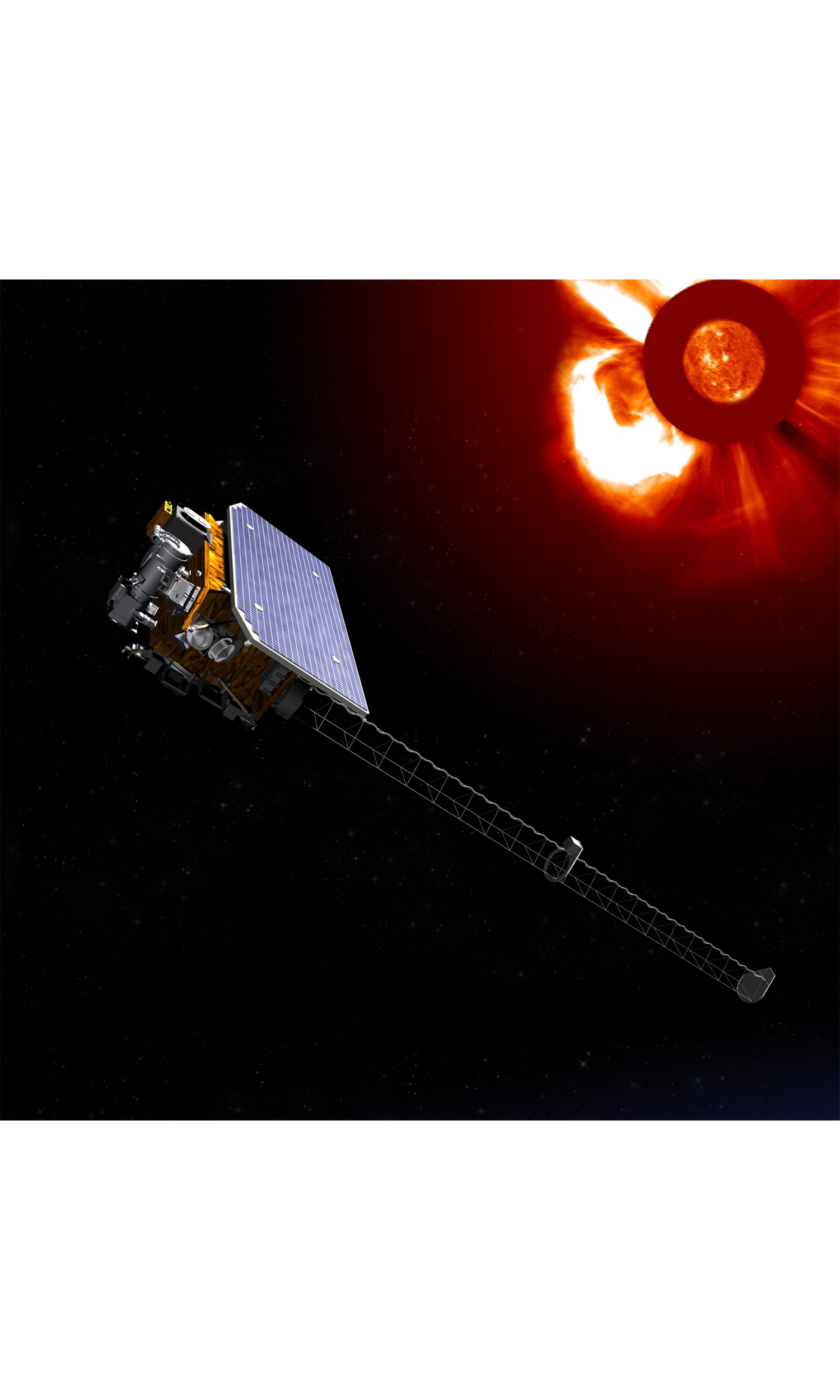

Space Weather Follow On-Lagrange 1
Monitoring Solar Storms / Early Warning Beacon
Ushering in a new generation of space weather observing satellites, the Space Weather Follow On-Lagrange 1 (SWFO-L1) mission is expected to launch in 2024 and facilitate early warnings for destructive space weather events. While orbiting the Sun at about 1.5 million kilometers from Earth on the Earth-Sun Lagrange Point 1, SWFO-L1 will collect solar wind data and coronal imagery to meet NOAA’s operational requirements to monitor and forecast impacts from solar storm activity. SWFO-L1 continues critical measurements from several observatories at Lagrange Point 1, including the Deep Space Climate Observatory (DSCOVR), the Solar and Heliospheric Observatory (SOHO) and the Advanced Composition Explorer (ACE).
The mission will provide the nation with critical remotely sensed and in situ observations to assess the space weather environment and provide early warning of damaging space weather events to protect critical national infrastructure like the electric grid and space-based assets. SWFO-L1 will host several instruments to measure and assess space weather, including detecting coronal mass ejection events.
SWFO-L1 instruments include:
-
The Naval Research Laboratory’s Compact Coronagraph
-
The Supra Thermal Ion Sensor from the Space Sciences Laboratory at the University of California, Berkeley
-
A magnetometer from the Southwest Research Institute
-
An X-Ray sensor from ESA
-
The Solar Wind Plasma Sensor from the Southwest Research Institute
SWFO-L1
NASA News Release
NOAA's SWFO-L1 page
What We're Doing
Spacecraft Provider, Integration & Test Lead
Ball Aerospace is also building an operational environmental satellite for the U.S. Space Force Space and Missile Systems Center called the Weather System Follow-on – Microwave (WSF-M). WSF-M will host its own Energetic Charged Particle space weather sensor in addition to its primary instrument to measure ocean winds.
